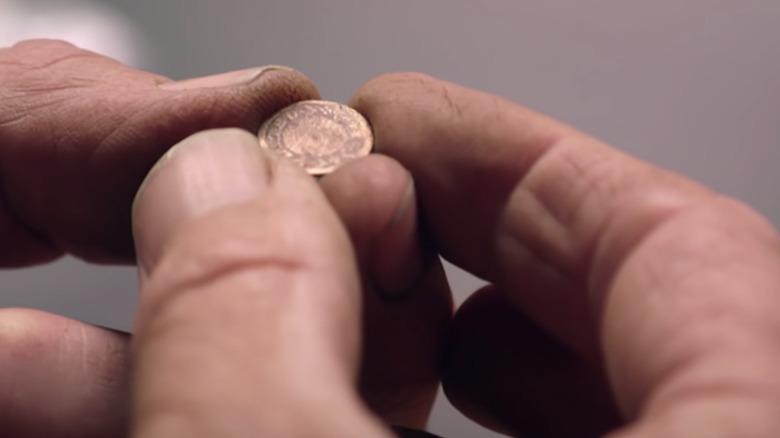The Mysterious Gold Coins Found On The Curse Of Oak Island
With "The Curse of Oak Island" in the midst of its ninth season, it's worth taking some time to look back on some of the Lagina brothers' more interesting finds over the years. The series follows the efforts of brothers Rick and Marty Lagina as they attempt to uncover the mystery of Oak Island: an infamous island off the coast of Nova Scotia that has been rumored to hold a secret buried treasure since as early as the 1700s.
Throughout its eight previous seasons, the Lagina brothers have come to learn the hard way that treasure hunting is a marathon, not a race. Along the way, they've found plenty of artifacts and historical heirlooms, including an ancient map, a jeweled brooch, and even a strange granite stone covered in unknown symbols — but they've never found the enormous treasure trove reported to be on the island (via History).
That's not to say they aren't getting closer though, and in fact the brothers have already found gold on the island once before, just not in the way they were hoping.
Gold? Yes. Coin? Maybe.
One of the longest standing theories about the Oak Island treasure asserts that the treasure is related to the Knights Templar, who accumulated a massive amount of wealth throughout the medieval period, only for that wealth to vanish.
Indeed, when one of the treasure hunters calls out to say he's found a gold coin in the Season 4 episode "Thicker than Blood," the entire excavation pauses for them all to get a good look at it. Not only did the small metal disc have strange markings around its edge (which nobody in the party was able to read) but the Laginas were able to confirm that it was actually made of gold.
Unfortunately, they weren't able to confirm it was actually a coin. A small dimple on the back of the object, along with the fact that the markings on the edges seem to say "plated," led some members of the party to claim it was actually a gold-plated button, as worn by British soldiers in the 18th century. Cool, but totally mundane. This suggestion opens up a whole new mystery about what the British involvement on the island might have been in centuries past.
So, more likely than not, it's not a piece of Templar treasure, but it's definitely not worthless, either.

